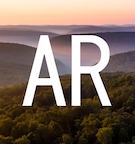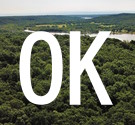Geographical Index > United States > Oregon > Clackamas County > Report # 1986
(Class B)
Submitted by witness Fred B. on Sunday, March 18, 2001.
Hikers make track find on Table Rock Creek, Oregon
(Show Printer-friendly Version)
YEAR: 2001
SEASON: Winter MONTH: March DATE: March 18, 2001 STATE: Oregon COUNTY: Clackamas County LOCATION DETAILS: To get to Table Rock Wilderness from Molalla take Dickey Prairie Road to South Molalla Road and follow Molalla River. Follow signs to Table Rock. See "investigator comments" for precise directions to location. NEAREST TOWN: Glen Avon NEAREST ROAD: Table Rock Road OBSERVED: Today, March 18, 2001, my brother and I were hiking near Table Rock Wilderness in Clackamas County, Oregon. Found footprints in the snow very much like a very large, bare, human foot. We wear size 12 and 13 boots and the prints were significantly bigger.
Using a dollar bill as a size reference I took pictures with a digital camera. Using the dollar bill we measured a stride of 4 feet. Also the prints were deeper than ours or the other human prints in the area.
I would like to submit the pictures for expert evaluation and will do so if an e-mail address is provided. OTHER WITNESSES: Myself and my brother. TIME AND CONDITIONS: It was around noon, dark day with light rain. ENVIRONMENT: A snow covered mountain road. Portions of the road are washed out so the road is closed to cars but is used by hikers. There is a rocky embankment and an area of clearcut with christmas tree size firs growing.
The location is about 1/2 below the point the Table Rock trail leaves the road.
Follow-up investigation report:
These directions, submitted by the witness, enabled me to easily find the tracks:
"To find the prints go to Table Rock parking lot. (Created when earthslide blocked the road.) I went up the road and little ways and took a trail off to the right that went a few hundred yards and then came back onto the road again. Continue up the road. The tracks are about two-thirds of the way between the point where the short trail joins the road again and the proper Table Rock trail begins. They are immediately to the right of the depression caused by the flow of people, a couple of feet away.
There was kind of a clear area on the right side of the road with small trees growing.
There were six or eight prints that I saw. They were four feet apart and you could see the right-left-right-left. It looked like he had been coming down the worn trail and had stepped off it for a few paces and then gotten back on.
Only one of the tracks had good detail that wasn't melted away. (The one photoed) The others were about the same overall size and shape and sat in the right sequence. It is hard to say how old they were. My brother said a week but I thought maybe the night before. It had been raining and the detail was being lost fast.
We did not disturb the one we took detailed pictures of but we dug around a little in the others looking for hair but we did not find anything.
There was nothing that I saw that indicated that the aminal might still be around. But then again there was nothing I could point to that would indicate that he was gone either.
We looked to find where he had gotten on the path and where he had left it but could not find anything. It is possible that he came from the Table Rock trail itself and so did not leave deep tracks that could be seen.
Hope this has been helpful. If you have any other questions I will try to answer. Let me know if you find anything else. And if I find anything else you will be the first to know."
Results of follow-up investigation:
On 3/20/01 I visited the location of the track find on Table Rock Creek in the Mt. Hood Nation Forest southeast of Molalla, Oregon. Precisely as the witness described, I found widely spaced bare-foot prints that measured 14" long and were spaced an average of 48" apart (from heel of one foot to same spot on heel of the opposing foot). I measured strides of 112" between heel impressions of the SAME foot in two places. I counted twenty four prints in all.
The tracks were beside a trail in the snow that follows a road bed to the Table Rock trailhead. Auto traffic is cut off by collapse of the roadway but snowshoe prints and boot prints were evident all along the road. The path along the road bed leaves the parking area as bare earth but gradually turns to completely snow covered. Snow depth at the track location, which is about one mile from the parking area, is about 18".
Several factors raise suspicion about the tracks: The tracks are close to other human tracks. The foot length is 14", which could be a human with size 14-15 feet. The most impressive aspect of the tracks is the long stride between steps. Still, I was able to duplicate the long stride with running leaps. I'm 6ft. tall. Though fakery cannot be ruled out, it is also possible that a hiker removed his shoes for whatever reason and ran in the snow in bare or stocking feet for some twenty-four steps. The footprints looked to be made from bare, not stocking feet. Toe detail on some prints seemed to be too clear for stocking feet.
On the other hand, the location is remote, the snow is deep, the elevation is high, and it therefore seems much less likely that a very large, barefoot person would be running through deep snow to leave these impressions for us to find. If the same tracks were found nearer to frequently traveled tourist locations, I would be more suspicious about their origin.
After visiting the site and viewing the tracks, I was able to resolve some of the concerns raised by Rick.
The tracks measued at a full 14 inches, maybe a bit more. Stride was considerable: 48" between same points in opposing feet and up to 112" between same points in same foot. Snow was 18" deep at the track site. Tracks penetrated 12" deep on average. The stretch of the trail with the tracks is north facing and preservation of the tracks has been aided by the lack of sun that strikes the snow in that shaded portion of the roadway.
While it is possible that a hiker removed his shoes and socks and took about twenty steps off the trail in the deep snow, the stride is too long for comfortable human strides. I was able to match the stride by running on the trail beside the prints and virtually leaping between steps. It would be exhausting to accomplish this in bare feet and in the deep snow at the 3500 foot elevation, but it is clearly *possible* for a determined person with large feet to have made these tracks.
Therefore, it seems unlikely to me that someone would go to this trouble in such a remote place. Further, I saw several other possible barefoot tracks in other places along the trail, but greater sun exposure deteriorated them to the point where nothing can be determined for certain. The tracks that were clearly evident looked to be about one week old. The last heavy mountain snow was 3/14-3/16. My guess is that the tracks were made right after this, before the snow developed the stiff crust from sun exposure that it has now.
I favor the view that the tracks are genuine sasquatch tracks. If genuine, why would the tracks be there? Perhaps a bigfoot was travelling down Table Rock Creek toward the warmer forested lowlands along the Molalla River. Or, could it be a resident sasquatch roaming it's home range? Either way, the compacted snow of the Table Rock trail provides much easier travelling than trekking across deep and trackless snow. The many boot prints on the trail also offers a means to travel without leaving discernible tracks if an animal wished to conceal its passing. Some of us favor the view that bigfoots make efforts to conceal their movements whenever possible. The numerous boot prints on the compacted snow trail would make recognition of individual tracks difficult.
So, why then, would one of these animals step out of the packed snow of the trail and leave these conspicuous tracks? From the size of the feet and the look of the track run, I envision an older juvenile or young adult that stepped out of the trail but soon found the going to be strenuous and returned to the trail. Speculation might include a strong-willed adolescent or two individuals sharing a narrow trail and jockeying for position.
In any case, the Molalla River area and specifically the Table Rock Creek locality has historic bigfoot activity extending over many years. Some field researchers consider it to be a hotbed of bigfoot activity.
While investigating the site at 5pm on 3/20/01, I did some elk calls and other animal calls. After doing my call, I heard two animal noises that I could not identify. The first was a single, shrill, loud scream.
The other unfamiliar sound was a low "whump-whump-whump-whump-whump-whump" sound that quickened as it repeated seven times. it repeated several times and I taped it on my camcorder. I thought of a grouse drumming but this noise was slower than the quick "thumpa-thumpa-thumpa-thumpa-thump" of grouse durmming that I'm familiar with.
-Thom Powell
|























